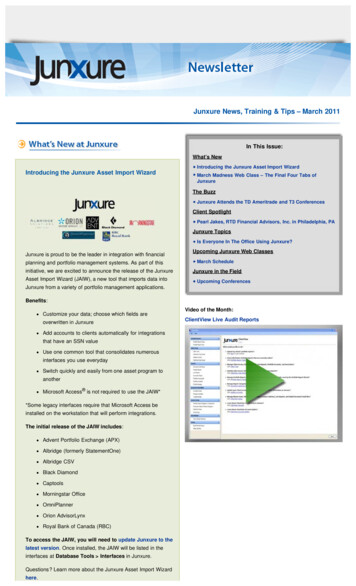
Transcription
Citation: Duquemin-Sheil, Daniel and Morehead, Sarah (2013) Collaboration across designdisciplines to create a new designer maker’s tool. In: Praxis and Poetics Research ThroughDesign Conference, 3 - 5 September 2013, Baltic Centre for Contemporary Art, ink:Northumbria University has developed Northumbria Research Link (NRL) to enable users toaccess the University’s research output. Copyright and moral rights for items on NRL areretained by the individual author(s) and/or other copyright owners. Single copies of full itemscan be reproduced, displayed or performed, and given to third parties in any format ormedium for personal research or study, educational, or not-for-profit purposes without priorpermission or charge, provided the authors, title and full bibliographic details are given, aswell as a hyperlink and/or URL to the original metadata page. The content must not bechanged in any way. Full items must not be sold commercially in any format or mediumwithout formal permission of the copyright holder. The full policy is available his document may differ from the final, published version of the research and has beenmade available online in accordance with publisher policies. To read and/or cite from thepublished version of the research, please visit the publisher’s website (a subscription may berequired.)
Research Through Design 2013Collaboration across design disciplines to create a new designermaker’s toolDanny Duquemin ‐SheilAbstractNorthumbria UniversityNewcastle upon TyneNE1 8ST UKdanny.duquemin-sheil@northumbria.ac.ukSarah MoreheadNorthumbria UniversityNewcastle upon TyneNE1 8ST UKsarah.morehead@northumbria.ac.ukFigure 1 Final DesignThis cross discipline collaboration was initiated to create a designtool that enhances creative use and accuracy in fashion patternconstruction, a tracing wheel. A tracing wheel aids the patterndesigner to translate a 3D Moulage design developed on amannequin into a flat paper pattern. This pattern can then be usedto create a final garment with accuracy in the desired cloth. TheMoulage process is used by couturier houses to obtain complexshapes that are difficult to achieve through flat pattern cutting.The manufactured tracing wheels available in the market aregenerally made from plastic and a cheap metal wheel. They looklike toy cowboy spurs. The spur wheel is the pricking implementthat rolls through the calico prototype to obtain a 'traced' pattern.The differing tracing wheels available lack tactile ergonomic useand/or do not leave a defined 'prick' in the paper required to obtainan accurate pattern.The case to hold this tool will be of equal importance to the toolitself, a protective barrier that holds the respected tool as a jewel. Amaker and their tools have a synergy. As in Sweeny Todd talkingabout his razors as an extension of his arm; “these are my friends,see how they glisten, see this one shine, how he smiles in the light,my friend, my faithful friend” (Sondheim, 2010) The productdesigner in conversation with the fashion designer have workedthrough the problems of use in current and vintage tools. Bothdesigners have contributed to the process in exploring flatwaredesigns (cutlery) for weight and hand feel, making sketches, CADrepresentations and modelling in OBO Model Board. Throughseveral iterations the finalised design has been executed in brass.The weight of the Brass in the product is hoped to give a betterhand feel and a positive user experience. It is intended to translatea cheap plastic tool to one that has greater worth, feel andresponsiveness to inspire further creativity in pattern translation. Atool that may engender continued pleasurable use in creativepattern cutting.Author KeywordsMoulage; Pattern Wheel; Tool; Ergonomics; Materials Exploration;Dialogue.1
Research Through Design 2013Research ImperativesFigure 2Existing Plastic handle Tracing WheelsThe tool on the left has burs left by theplastic molding processes that are sharpin the palm of the hand. The tool on theright has a pressed metal wheel withblunt serrated points.Figure 3Pre sketch that initiated thecollaborative conversationThis practice based research was a response to the inadequaciesof a pattern cutting tool, the tracing wheel. A tracing wheel aidsfashion design pattern cutters to translate pattern pieces accuratelyonto paper. Designers will often moulage an idea on a mannequin,molding, draping, easing, shaping and forming fabric around asubstitute human form. This 3D construction is dismantled from themannequin with all the annotations and traced through the fabricwith the pin pricks from the tracing wheel in order to obtain a flatpattern that when cut in the desired cloth will form the finalgarment. The current tracing wheel tools vary from those withcheap plastic handles with sharp burs left from the molding processto those with wooden handles on a metal shank with thin pressedserrated wheels that leave a blunt impression on the pattern paper.Fig 2Danny Duquemin-Sheil from Northumbria Designers in Residencehas been building a body of work that explores tools for everydayliving. The Designers in Residence latest inquiry is to form apartnership for a collaborative project. Danny and Fashion DesignAcademic Sarah Morehead discussed tools in fashion design andthe increasingly disposable nature of tools that did not enhance theuser’s performance but possibly hindered the processes throughdiscomfort in use.This new tracing wheel tool was to sit comfortably in the hand, feelsmooth to touch, keep the wrist at a consistent angle and havegreater aesthetic appeal than those already available for purchase.The cost of the tool would be considerably more expensive thancurrent disposable models and possibly equal in value to a goodknife. Like any artist, having the right tools to craft your work isvitally important. Having a connection to those tools that theybecome an extension of your physique adds to this interplay ofbody and tool.Research ProcessInitial conversations between the two designers were about thetool, its function, existing products and their strengths andweaknesses. The cheap, disposable products available on themarket were neither visually appealing nor ergonomic in handledesign. Fig. 4Figure 4Examples of existing products, their handles and wheel structuresDanny became aware through demonstration from Sarah of whatthe tool should be able to do and the short comings of existingtools. This led to a series of rough sketches to explain in moredetail the tool’s function and aesthetics.Fig.3. Each designerdiscussed 3 D forms that could be relevant to the design andmaking of a more elegant tracing wheel tool. Danny boughtdifferent sculptural Japanese bamboo knifes, spoons and strainerswhilst Sarah shared an understanding of how historic cutlery mightinform the process. (Brown, 2001) The simple forms of the moldedand cut bamboo were very elegant. Fig.5. The Pistol and Rattailthdesigns of 18 century cutlery offered a tactile shape that could sitacross the palm of the hand with comfort. Fig.8. Throughconversation and overt and discreet demonstration eachpractitioner gained knowledge and understanding of the materials2
Research Through Design 2013and processes required to create the tool. Discreet demonstrationas in the hand movements and body gestures that accompaniedthe conversations which gave a richer understanding of the jointprocess we were undertaking.Figure 7CAD illustration of wheel areaFigure 5Japanese Bamboo ToolsFigure 8Contemporary Pistol FlatwareThrough exploring, handling and feeling the shapes of modernbamboo and traditional cutlery the first developments, sketches andmodel in OBO modeling foam were produced. The tool was to fit anaverage size 7 hand. In the first model the handle fell into the cupof the hand, from user experience this can cause pressure whenpushing the wheel into the small bones in this area resulting inpain. The second iteration was elongated to sit on the mound offlesh, the Hypothenar muscle group opposite the thumb group ofmuscles called the Thenar. Fig. 6 the length of the tool was nowestablished along with the upper girth and comfort in the palm.Focus was now placed on how the fingers curved around the tool togrip the handle. The underside area of the tool where the fingerscurl back to grip was skived and pared to enable an internalprecision grip. The forefinger should direct and control the wheel asa drawing implement. The area above the wheel needed to be ofsufficient width to comfortably rest the pad of the finger at a relaxedangle. The shape of the tool was to enable good grip and minimaleffort in wrist movement allowing an imaginary straight line throughthe pad of the forefinger through the hand and up the wrist to theforearm. Fig.1 All of these parameters had informed thesubsequent models. At each stage we discussed the evolvingaesthetic. To Sarah, the now functional tool needed to have a morejewel like aesthetic and to encompass the elegance of fine dining.For Danny the tool had become an elegant bird like form.Danny designed the steel spiked brass wheel through CAD andprovided the details to enable a local engineer company to providea costing. Fig. 7 Dialogue with Tom Jones from M Machine, thespecialist in this area of manufacture, offered two ways ofexecuting this component. Handmade would cost 300 and to havea production tool made for batch work would be similar. At thispoint we discussed refining the spiked wheel from an older tool forinclusion and attachment to our newly formed handle. This wheelwas ground and polished to give a more considered aestheticappeal to the pinched brass structure that holds in the conical steelpoints. Danny made a special wooden clamp to hold the wheelwhilst grinding and polishing the faces of each side of the hub. Hedeveloped a tool to create another tool. The sex bolt that holds thespiked wheel in place was purloined from an old Anglepoise light.This dictated the size of the central hub hole and is aestheticallylarger than desired.The box is of wooden construction with the inner area routed andlined to hold the instrument in place. The lining will be in crushedvelvet or similar to reflect the inside of a snooker case, jewel box orcutlery canteen, (see link to Maria Theresia Vienna). The newtracing wheel is considered as an item to be cared for much in thesame way as a snooker player carries their own identifiable cue inits bespoke case. This tracing wheel should also have its ownceremonial space.Figure 6 Hypothenar and Thenar3
Research Through Design 2013Research OutcomesThe journey and understanding between each different designdiscipline, 3D product and fashion, has led to a wider knowledge inhard and soft materials and the performance qualities of hand tools.The process has brought a mutual acknowledgement in how weexplain and communicate ideas through pre sketch, actions,conversations, metaphors and the different vocabularies of eachdiscipline. Performance of the user is inextricably linked to theperformance of the tool and has impact on the creative flow andintentions of the creator. Disposable tools impinge on how we feelabout our craft processes whilst using them. We are moreconscious of the negative sensations of the tool in use. A tool thatbecomes a seamless extension of our selves and where webecome less conscious of its presence enables an interruptedcreative flow. When we put the tool away, look after it, we takeownership of its function and ability to perform for us in a pleasingmanner. This in turn builds pleasurable memories of positive use,creating a virtuous circle of care, use and performance.conversations about similarity to flatware. Flatware, cutlery, alsohas to feel comfortable in the hand as a discreet but pleasurablethtool to aid dining. Affluent travelers’ during the 18 century carriedtheir own flatware housed in elegant boxes, (see Britannicareference). This tracing wheel has been created with the sameconsideration. The tool is expensive in comparison to its disposablecounterparts. It was not necessarily intended for mass manufactureand would be comparable in price to a good pair of drop forgedEnglish bespoke shears. However, it could be cast in brass tomake the tool more economically viable as a product. As manymusicians are aware, practicing with a beautifully made instrumentaids positive feedback through both sounds and touch. The tracingwheel tool was intended to aid the connectivity of man to craft andthe wielding of materials in creative flow. Just like the musician, thegreater connectivity to the tool, the greater the reward in learning,performance and tacit understanding. Final designs Fig.10,11,12ReferencesBrown, P. (editor), British Cutlery; An Illustrated History of Design,Evolution and Use, Philip Wilson Publishers Limited 2001 SheffieldSondheim, S. Sweeney Todd Vocal Score.(2010) Hal Leonard ic/147537/cutleryAccessed 25th June 2013Figure 10Finished nnal Cutlery Maria Theresia Vienna 1.jpg Accessed 25th June 2013Figure 9 Filing and refining final toolFigure 11Wheel Section, Sex Bolt is too largeIt is understandable that sons wish to care for their fathers toolswhich although grey and worn through time have a strongerconstruction, feel and lasting performance. Good tools haveemotional resonance. This tool in solid brass has elicitedFigure 12 Finished design4
Figure 1 Final Design This cross discipline collaboration was initiated to create a design tool that enhances creative use and accuracy in fashion pattern construction, a tracing wheel. A tracing wheel aids the pattern designer to translate a 3D Moulage design developed on a mannequin into a flat paper pattern. This pattern can then be used
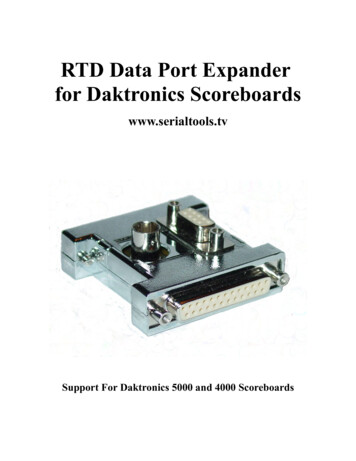
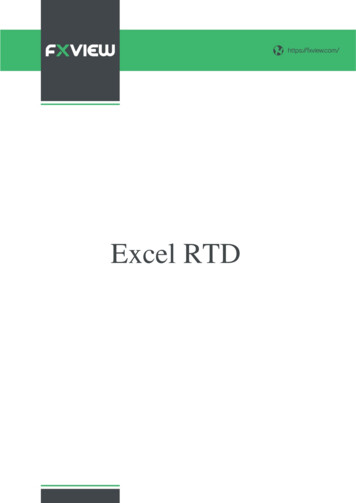


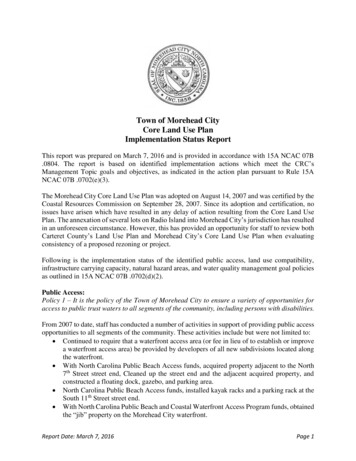
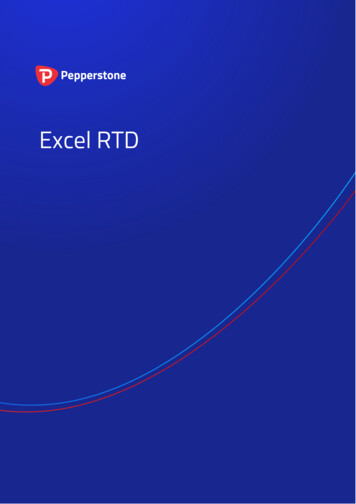
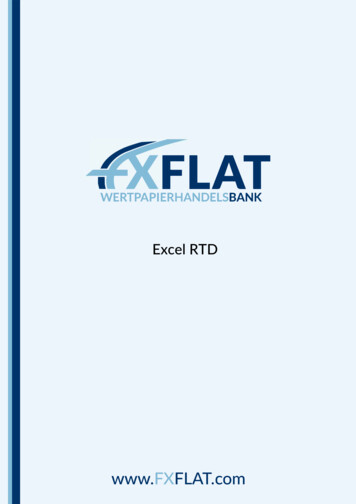
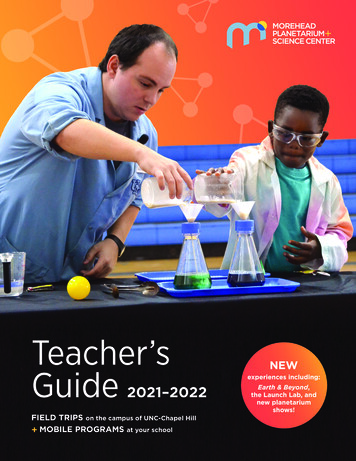
![Welcome [ uky.edu]](/img/13/morehead-20catalog-20s19.jpg)
